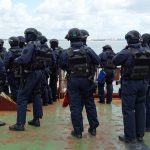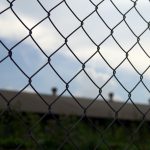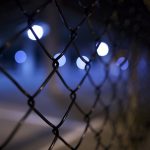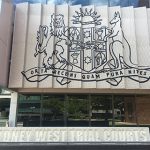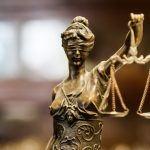What Are State of Emergency Powers In New South Wales?
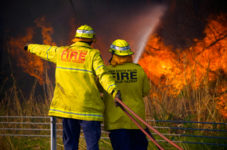
As of last Friday, there were still over 50 bushfires raging in NSW and Victoria. Properties were lost to the Clear Range bushfire on the south coast of NSW over the weekend. And the ACT declared a state of emergency on Sunday morning, which was revoked early the following day.
Indeed, the current Australian bushfire season has been the most intense the nation has ever seen. And with NSW being the jurisdiction hit hardest, state premier Gladys Berejiklian has enabled emergency powers on three occasions.
An official NSW government order outlines that the premier declared a state of emergency on 2 January and it would remain in force until the 10th of the month. Another week-long emergency order was issued on 19 December, with the first being called as far back as 11 November.
“Declaring this state of emergency is vital to the safety of communities in NSW as we face the most devastating bushfire season in living memory,” Berejiklian said in a press release as she called in the third state of emergency early last month.
While November’s state of emergency was the first time that these measures had been invoked since then premier Barry O’Farrell called a state of emergency in relation to Blue Mountains fires in 2013. At the time, it was only the fourth occasion the powers had been used since 2006.
Drastic measures
The state of emergency powers are contained in division 4 part 2 of the State Emergency and Rescue Management Act 1989 (NSW) (the Act). And each time the premier called an emergency over the summer, she did so on the advice of NSW Rural Fire Service (RFS) commissioner Shane Fitzsimmons.
Section 33 of the Act permits the state premier to call a state of emergency. And in doing so, they have to be “satisfied that an emergency constitutes a significant and widespread danger to life or property.”
The order can apply to the whole state or specified parts of it. It must be given in writing. And in line with section 34, the order must be broadcast on television or radio. And it must be published online, as well as in either the state government gazette or the NSW legislation website.
According to section 35 of the Act, a state of emergency is effective immediately, it can remain in force for up to 30 days, and it doesn’t prevent the declaration of further such measures.
Abandoning post
A state of emergency bestows special powers upon the NSW emergency services minister, which has been David Elliot since 2 April last year. And section 36 of the Act allows the minister to coordinate the activities of any government agencies, along with allocating state resources.
Despite the bushfire crisis having kicked off as early as September, and being of an intensity not seen before, Minister Elliot decided it was okay to take off on a European holiday just after Christmas, as the blazes continued across the state.
The minister returned as the third state of emergency was being declared in early January. He then labelled his actions as “inexcusable”, even though at the time he left, there had just been nationwide condemnation of PM Scott Morrison for having left to Hawaii for a holiday during the bushfires.
On return, Elliott had the state of emergency powers available to him under section 37 of the Act, which allow him to direct people to evacuate a premises or an area, to take anyone in the care of another from an area, or to prevent people from entering the emergency zone.
The minister can also order that the directions be given by an emergency services officer, which is an officer from NSW police, Fire and Rescue, the State Emergency Service, or the rural fire bridge, a Regional Emergency Management officer or a member of NSW Ambulance.
If an individual doesn’t follow such a direction, the emergency officer is permitted to use reasonable force. And section 38 permits the minister to take possession and make use of another’s property. And while the owner may be compensated, they’re not automatically entitled to compensation.
Enhanced powers
Each time an emergency has been called of late, it’s meant that the RFS commissioner has been able to exercise special emergency powers. They’re set out under section 37A of the Act and are “for the purpose of protecting persons or animals from injury or death or protecting property”
Applying within an emergency area, these powers include closing any street, thoroughfare, or place, destroying any damaged wall or premises, and the shutting down of the “supply of water, gas, liquid, solid, grain, powder or other substance” to a pipeline, container or storage facility.
The commissioner also had the ability to shut off the supply of electricity or gas to any premises, as well as to take possession, remove or destroy any material within the designated emergency area.
Sections 37B through to 37F provide that in relation to section 37A powers any person officially authorised may enter a premises in an emergency zone. This individual must provide written notice to the owner, and they must exercise proper care, as well as being able to apply reasonable force.
Penalties regarding the powers
Section 37A makes it an offence for an individual not to comply with any direction given by the RFS commissioner or any other authorised emergency authority under that section of the Act. And the maximum penalty for failing to go along with such a direction is a fine of up to $5,500.
Section 40 of the Act makes it a crime to obstruct or hinder the NSW minister, or any emergency services personnel operating with the authority of the minister, in their exercising of a state of emergency function.
The maximum penalty for this crime is up to 2 years behind bars and/or a fine of $5,500.
Just for good measure…
And section 41 makes sure that state authorities can’t be held liable for their actions during a state of emergency. It stipulates that an individual cannot bring proceedings against the Crown, the minister or any other person acting under their authority in accordance with emergency powers.
This provision absolves state authorities in relation to any damage to property, loss, death or injury “sustained because of anything done or omitted to be done in good faith” during a NSW state of emergency.



